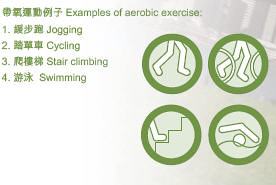Whether you want to lose weight or maintain a healthy weight, it’s important to understand the connection between the energy your body takes in (through the foods you eat and the beverages you drink) and the energy your body uses (through the activities you do).

Energy Balance is like a scale. To remain in balance, the calories consumed (from foods) must be balanced by the calories used (in physical activity). To lose weight, you need to use more calories than you take in. The right way actually is just a simple equation:
| Calories expended > Calories intake = Body fat decreased |
How to increase calories expenditure and how to decrease calories intake?
Combine right nutrition with the right exercise and with the right supplementation to keep a fit body.
Decrease Calorie Intake
1. Control Carbohydrate Absorption
Balance Blood Glucose and Insulin Level. After food consumption, the blood glucose level will increase gradually. At the same time, the pancreas will release insulin to transport the glucose to the body cells as energy through blood circulation. After the glucose is consumed, the blood glucose and insulin level will start to decrease. However, if blood glucose level is lower than the normal range or if the insulin level is too high, we will consume high amount of carbohydrate food to balance the increased appetite and hunger sensation. As a result, the excess carbohydrates will be transformed to fat and stored in the body.
Inhibit Carbohydrate Breakdown. When carbohydrates enter the gastrointestinal tract, it will be broken down into glucose and the absorbed by the body. This procedure will enhance the hunger sensation and appetite due to the fluctuation of blood glucose level. On the other hand, if this breakdown is inhibited, the carbohydrate digestion time is delayed. This can balance the blood glucose level and increase satiety in order to avoid extra calorie intake. Therefore, the chance of fat accumulation will also be decreased.
2. Control Fat Absorption
Food with high fat content is a major cause of fat acccumulation. It is because 1 gram of fat contains 9 kcal which is double the amount from carbohydrate and protein. If we consume large amount of high fat content food every day and cannot expend all these calories, fat will accumulate in our body gradually.
To avoid fat accumulation, we should avoid eating high fat content food or excrete the fat from food out of the body.
| Fat | 9 kcal per gram |
| Carbohydrates | 4 kcal per gram |
| Proteins | 4 kcal per gram |
3. Balance Cortisol Level
When we are under stress, our body will produce a stress hormone called cortisol. Cortisol stimulates the release of glucose, fats and amino acid for extra energy production. When it is at a high level, it will trigger signalling mechanisms within the brain to increase our appetite and tell the fat cells in our abdomen to store as much fat as possible which then leads to abdominal fat.
By bringing cortisol back to a normal level, we are able to alleviate that metabolic signal, so our appetite and blood sugar level are under better control and the fat cells are in a state where they are more likely to release fat instead of store fat.
Increase Calories Expenditure
1. Increase Basal Metabolic Rate (BMR)
Basal Metabolic Rate (BMR) is the amount of energy that the body requires to support the normal functions of the body. BMR is directly related to energy consumption. For example, if you exercise regularly, your BMR will be higher. It is because the BMR will be automatically increased by the body in order to increase the energy consumption to satisfy your body needs during exercising. On the other hand, if you lack exercise, the BMR will be lower. Even if you eat a low calorie diet, your body still cannot expend all the energy. The excessive energy will be transformed into fat instead.
Therefore, the first step to manage your weight is to do exercise and to increase the BMR.
2. Enhance Lipolysis and Boost Thermogenesis
To expend calories from fat, we have to break down the fat molecules into 3 fatty acids and a glycerol molecule. By burning the fatty acids, energy can be produced. To increase energy expenditure, we have to enhance lipolysis in order to boost thermogenesis.
The Right Nutrition
1. Quality of Food
 In order to lose excess body fat effectively, we need foods that have appropriate levels of macronutrients (protein, carbohydrate, fiber and fat) and micronutrients (antioxidants, vitamins and minerals). Consistently eating more high quality, fresh and colorful foods and avoid eating low quality, processed food. This ensures that we get the macro and micronutrients that will enhance weight management.
In order to lose excess body fat effectively, we need foods that have appropriate levels of macronutrients (protein, carbohydrate, fiber and fat) and micronutrients (antioxidants, vitamins and minerals). Consistently eating more high quality, fresh and colorful foods and avoid eating low quality, processed food. This ensures that we get the macro and micronutrients that will enhance weight management.
2. Eat 1/2 as much as twice as often
Most city dwellers usually eat out and eat too much. By "eating 1/2 as much as twice as often" we will immediately stop overloading our bodies with calories. Eating smaller meals more frequently will allow our bodies to burn off calories before they are stored as fat. One of the rules of successful weight management is DO NOT GO HUNGRY!
When preparing a meal using high quality food, you can determine portions simply by using your hands:

The Right Exercise
1. Stretching
Before doing any aerobic exercise and strength training exercise, we have to do some stretching exercises for 10 minutes. This can increase the flexibility of the joint and connective tissues in order to enhance the physical performance.
2. Aerobic Exercise
 Aerobic exercise refers to activity that is rhythmic in nature, lasts for a prolonged period of time (about 20 minutes or longer) and encourages the body to utilize oxygen to meet energy demands. These exercises last longer and are less intensive than strength training exercise.
Aerobic exercise refers to activity that is rhythmic in nature, lasts for a prolonged period of time (about 20 minutes or longer) and encourages the body to utilize oxygen to meet energy demands. These exercises last longer and are less intensive than strength training exercise.
3. Strength Training Exercise
When we are undergoing weight management program, our body fat content decreases causing muscle and tissue shift. Strength training exercise can help reduce body fat, increase muscle tone and streamlines body shape in order to create a firmer and fitter appearance.
The Right Supplementation
1. Duolean
 Duolean contains cactus extract (NeOpuntia) and wheat extract (Alpha Trim-W), two potent all-natural plant extracts which can reduce the fat and calorie absorption by the body. It is specially suitable for adults who have diets high in fat and carbohydrate.
Duolean contains cactus extract (NeOpuntia) and wheat extract (Alpha Trim-W), two potent all-natural plant extracts which can reduce the fat and calorie absorption by the body. It is specially suitable for adults who have diets high in fat and carbohydrate.
NeOpuntia - Control Fat Absoption A proprietary ingredient extracted from Opuntia ficus indica cactus. It contains two unique fibers which can bind fats from our food and excrete out of the body through unique procedures. These procedures can reduce the amount of fat directly absorbed by the body.
Alpha Trim-W - Inhibit Carbohydrate Breakdown An ingredient extracted from wheat germ, it can inhibit the breakdown of carbohydrates. It can delay the digestion of carbohydrates and extend the period of time that carbohydrate stay in the stomach. Therefore, it can increase satiety and balance blood glucose level in order to reduce the total calorie intake per day.
2. TRA Complex
 TRA Complex contains a blend of scientifically proven ingredients. It combines the key ingredients from Tegreen97, Cortitrol and CraveEase to create an effective weight management through three metabolic processes. It includes controlling carbohydrate craving, balancing cortisol level, enhancing lipolysis and boost thermogenesis. This formula is specially suitable for people whose obesity problem is caused by stress, carbohydrates craving and people with high body fat ratio.
TRA Complex contains a blend of scientifically proven ingredients. It combines the key ingredients from Tegreen97, Cortitrol and CraveEase to create an effective weight management through three metabolic processes. It includes controlling carbohydrate craving, balancing cortisol level, enhancing lipolysis and boost thermogenesis. This formula is specially suitable for people whose obesity problem is caused by stress, carbohydrates craving and people with high body fat ratio.
Banaba and Brewer's Yeast - Balance Blood Glucose/Insulin Level Banaba leaf facilitates the body's maintenance of blood sugar and insulin levels within their normal and desireable range and may hep people resist the urge to snack between meals.
Brewer's yeast is a natural source of chromium. It can increase insulin sensitivity and decrease levels of circulating insulin.
Magnolia Bark, Epimedium and L-Theanine - Balance Cortisol level Magnolia Bark and Epimedium can modulate stress level and balance the cortisol level.
L-Theanine, a unique amino acid found in the leaves of green tea (Camelia sinensis) acts as a non-sedating relaxant to help increase the brain's production of alpha-waves. It is effective for combating tension, stress and anxiety without inducing drowsiness.
Green Tea - Enhance Lipolysis and Thermogenesis Several studies found that green tea is capable of improving lipolysis and glucose metabolism, enhancing insulin sensitivity and balancing the metabolic rate of fat deposit and fat burning.
3. Metabotrim
 Metabotrim contains chromium, L-carnitine, multivitamins and minerals. These potent ingredients can promote carbohydrate, protein and fat metabolism in order to transform food to energy. It even can boost thermogenesis when used in conjuction with aerobic activity. This formulation is especially suitable for people who want to promote the metabolism.
Metabotrim contains chromium, L-carnitine, multivitamins and minerals. These potent ingredients can promote carbohydrate, protein and fat metabolism in order to transform food to energy. It even can boost thermogenesis when used in conjuction with aerobic activity. This formulation is especially suitable for people who want to promote the metabolism.
Chromium can balance insulin level which helps regulate carbohydrate, protein and fat metabolism.
L-carnitine promotes fat metabolism in order to transform fat into energy.
Vitamin B Complex can maintain normal body metabolism in order to promote energy production.
4. TrimShake
 TrimShake is a delicious an satisfying shake that is perfect for breakfast or as a meal replacement, It produces the nutritional balance integral to effective weight management. Trimshake is high in protein and soluble fiber, low in fat and is available in chocolate and vanilla flavor.
TrimShake is a delicious an satisfying shake that is perfect for breakfast or as a meal replacement, It produces the nutritional balance integral to effective weight management. Trimshake is high in protein and soluble fiber, low in fat and is available in chocolate and vanilla flavor.
References:
1. Nutrition for Everyone, Centers for Disease Control and Prevention, USA
2. The TRA Booklet, Pharmanex
 TRA, THE RIGHT APPROACH TO WEIGHT MANAGEMENT, COMBINES THE RIGHT NUTRITION, THE RIGHT EXERCISE AND THE RIGHT SUPPLEMENTATION TO KEEP A FIT AND HEALTHY BODY.
TRA, THE RIGHT APPROACH TO WEIGHT MANAGEMENT, COMBINES THE RIGHT NUTRITION, THE RIGHT EXERCISE AND THE RIGHT SUPPLEMENTATION TO KEEP A FIT AND HEALTHY BODY. 









